Don't wanna be here? Send us removal request.
Text
Tips for writing patterns
Use at least 17 separate post-its. Stick them to walls, in no particular order.
Use different shorthand on every note. You want it to feel like you're breaking the enigma code when you try to decipher it later.
Very important: wait at least three months to type it up. At least one post-it should be lost or destroyed by then.
11 notes
·
View notes
Text





More angles on the ant-migurumi. Her name is Arachne. (Yes, I see the obvious issue here. But my dad seemed excited to name her!! and Arachne is technically a hard working bug lady)
72 notes
·
View notes
Text
You deserve a stuffed ant.
As I mentioned before, I don’t think enough people cuddle ants! I have here a solution, which I would like to share with you all.

I have not named her yet, but if you can think of a hardworking woman I could make an ant pun about please let me know! I have attached the pattern and I’d love to see your own versions! I based this mostly on Lasius niger, the black garden ant you’ll see around the UK, but it’s a pretty generic ant, I think. I’m not an entomologist, just an enthusiastic amateur.





Image: Theodore Pavlic, from book Social-Behavioral Modeling for Complex Systems

Image: Wikimedia Commons
#garden ant#knitblr#crochet#knitting pattern#lasius niger#amigurumi#fiber arts#free knitting pattern#free crochet pattern
229 notes
·
View notes
Text
Not enough people have a stuffed ant. I am planning to fix this.
19 notes
·
View notes
Text

this is Ted! He’s a Very Helpful Bear. He’s 22 years old and listens to me practice my presentations so I’m used to doing them with an audience. In earlier stages of our lives he got chewed on a lot, but we’re past that now.
Anyway, when I made myself a new sweater, he got a matching one. A new outfit for his daytime window duty?
Pattern (for humans): https://www.ravelry.com/patterns/library/183-20-ashbury-park
Put your teddy bear in the window for kids to look for during quarantine! https://www.google.com/amp/s/www.bbc.co.uk/news/amp/world-52108765
18 notes
·
View notes
Text
The Père David’s Deer Pattern
Free pattern time!!!
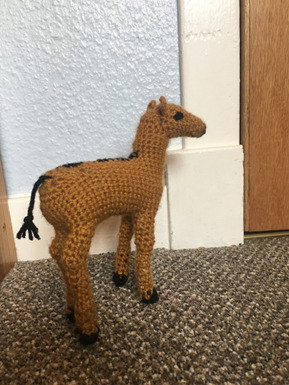

This is a Père David’s deer, an incredibly interesting animal I don’t think gets enough attention. It’s also a great example of the benefits of captive breeding! I’m hoping this post will teach you about the deer, but also about some of the benefits captive breeding programs can have! Shoot me a message if you have any questions about the pattern, the animal, or captive breeding programs!
Quick facts:
Said to look like a combination of a deer, a donkey, a cow, and a horse
Went extinct in China, only survived because a monk stole from the Chinese emperor
Weighs up to 200 kg; could (and has) beat me in a fight
Click keep reading to learn about the history of the deer and the benefits of captive breeding, or go to the bottom for the pattern (I know, it’s clunky)
The story
For a long time, Père David’s deer lived across China, but by 1860 all the remaining animals belonged to the Emperor, who kept them in a carefully guarded private garden. Breaking in was punishable by death.
A visiting French monk, Père Armand David (yeah, the same guy who told the West about pandas) somehow found out about—and then got his hands on—some of the deer. How exactly he did this is unclear, but we can say pretty definitely that they were stolen, either by evading or bribing the guards. Père David himself would probably have claimed they were a gift, which would have been a lie. At any rate, a few of the deer were smuggled back to private collections in Western Europe over the years.
In 1895, a flood knocked down part of the walls enclosing the royal garden, and some of the deer escaped, only to be eaten by starving peasants. The deer that had stayed in the garden were killed by German troops during the Boxer Rebellion soon after.
Meanwhile, the 11th Duke of Bedford had been gathering all the deer living in Europe at Woburn Abbey in England. All modern Père David’s deer are descended from 11 of the 18 animals he managed to find. Surprisingly, there don’t seem to be any problems from all this inbreeding (that we’ve noticed yet, anyway). Starting in 1985, small herds were sent back to guarded nature reserves in China, and by 2005 over 2000 Père David’s deer were living in China. A few hundred currently live in the wild—they escaped after a flood, the same way as in 1895.
The takeaway
Obviously, despite its shady beginnings, this is a success story for captive breeding and reintroduction! Today, though, breeding programs are better than they were in the 19th century. More attention is paid to inbreeding, and we tend to begin programs much earlier than we did in this case. The cooperation of international zoos would hopefully keep a population from falling as low as the Père David’s did, and modern programs keep a stud book for the entire captive species to help prevent inbreeding.
Programs also try to make sure that animals don’t lose their survival skills after a few generations in captivity. There’s evidence that moose could lose their reaction to dangerous predators after three generations in captivity! The Père David’s deer, though, still reacts well to their historical predators, such as tigers. Overall, they’ve avoided a lot of the pitfalls that captive-bred species are especially vulnerable to, and a healthy, diverse, completely wild population might be coming soon to China.
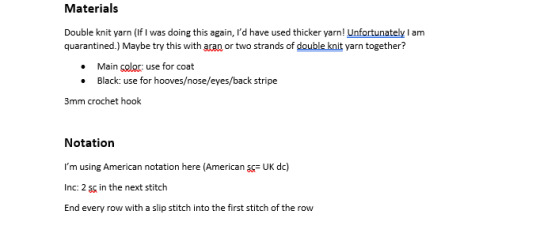





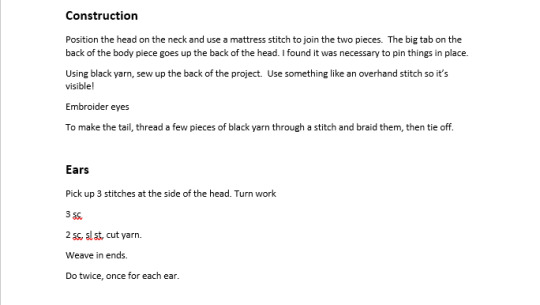
Post sources (if you’re interested)
Jiang, Z et al (2000). Reintroduction and recovery of Pere David’s deer in China. Wildlife Society Bulletin 28(3): 681-687.
Jiang, Z. & Harris, R.B. 2016. Elaphurus davidianus. The IUCN Red List of Threatened Species 2016: e.T7121A22159785.
Li C et al (2011). Do Pere David’s deer lose memories of their ancestral predators? PLoS One 6(8): e23623.
Seddon PJ et al (2014). Reversing defaunation: Restoring species in a changing world. Science 345(6195): 406-412.
Yuan B et al (2019). Differential movement pattern of Pere David’s deer associated with the temporal rhythm using GPS collar fix. Global Ecology and Conservation 18:e00641
Wakchaure R & Ganguly S (2016). Captive Breeding in Endangered Wildlife: a Review. Journal of biological and scientific opinion 4(5): 186-187.
#crochet pattern#free crochet pattern#knitblr#amigurumi#pere davids deer#milu#fiber arts#this one is actually for a class#knitting pattern
54 notes
·
View notes
Text



Upcoming pattern! This is a Père David’s deer (Milu) amigurumi: I’ll post the full pattern soon. Don’t worry, I’ll tell you what they are and why you care too: they’re a captive breeding and rewilding success story (sort of...)
Image from Wikipedia
64 notes
·
View notes
Text



The reason I made all those Icelandic horses: designing a Christmas present for my sister! (The horse herself is wet and snowy in these pictures, which I think makes her look darker) Overall pretty pleased with the outcome!!! I think it’s a decent copy.
66 notes
·
View notes
Text
OH MY GOD
a hat that, when you unroll the brim, looks like the Mandalorian’s helmet.
This is a better idea and as the gym is closed today I will be doing it now.
I know everyone’s doing it but I have a powerful urge to crochet or knit a baby Yoda… that being said I have a very specific vision and perhaps not the skills to carry it out.
31 notes
·
View notes
Text
I know everyone’s doing it but I have a powerful urge to crochet or knit a baby Yoda... that being said I have a very specific vision and perhaps not the skills to carry it out.
31 notes
·
View notes
Text
Ravelry
So I’ve finally gotten my shit together and put some patterns on Ravelry.
https://www.ravelry.com/patterns/library/highland-cow-5
https://www.ravelry.com/patterns/library/sperm-whale
12 notes
·
View notes
Text
Help!!
So this is definitely my grandma showing, but I absolutely cannot figure out how to post my patterns on Ravelry. Had an account since 2012 and somehow never figured this out.
8 notes
·
View notes
Photo
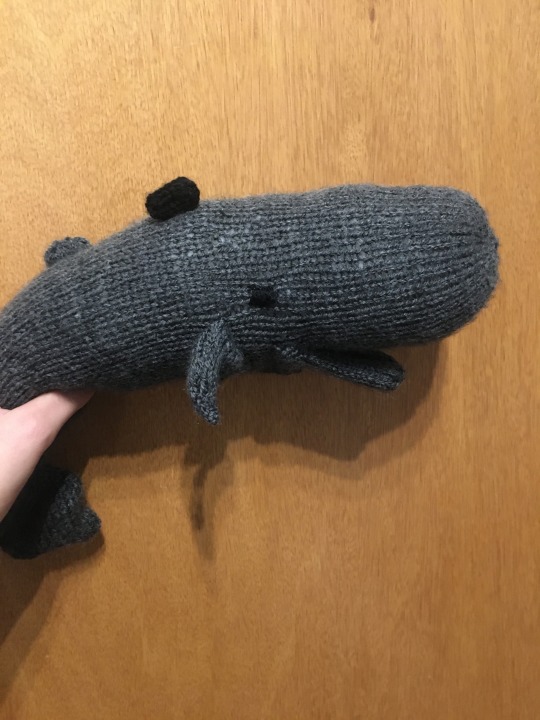
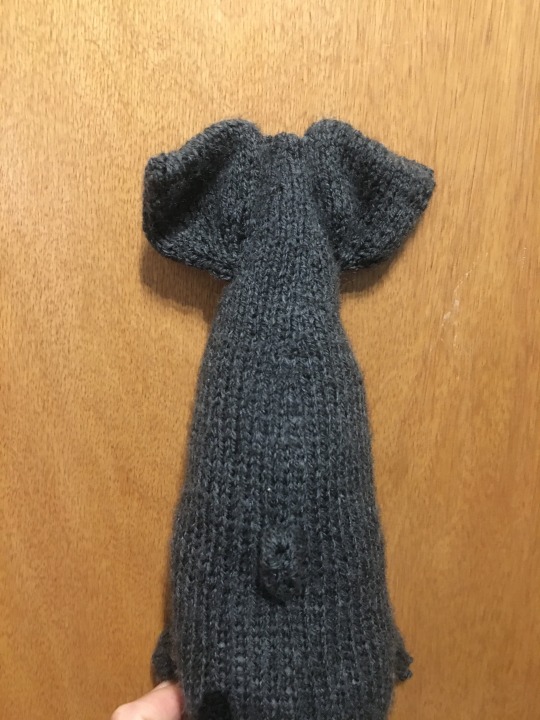
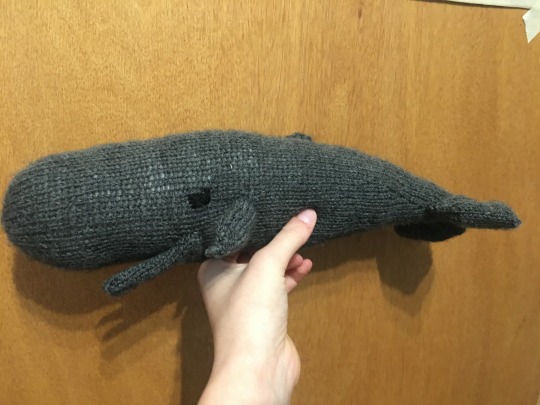
So I finally took a break from my exam prep (math about sperm whales) to type up this slightly too well-researched pattern (also about sperm whales). Sorry for my hand in all the pictures-- the door was the only background that was working. Also, if anyone does this I really want to see, nobody’s ever shown me something they made from my patterns before! Pattern is below read more.




#knitting pattern#free knitting pattern#crochet pattern#amigurumi#knitblr#fiber arts#sperm whale#physeter macrocephalus#marine biology#is this studying#i've decided it counts
382 notes
·
View notes
Text



Incoming: a dissertation-inspired project! A sperm whale (Physeter macrocephalus) and his data collection tag.
Publishing pattern soon.
25 notes
·
View notes
Text

Ate kale yesterday and now I might be too jacked to crochet
40 notes
·
View notes


